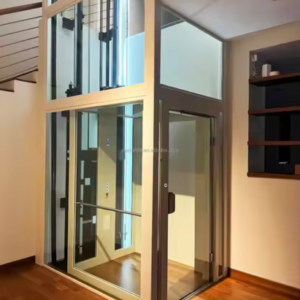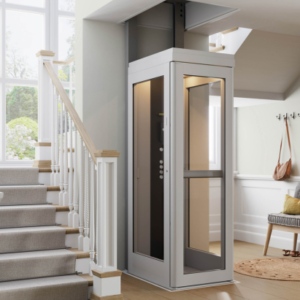Lift and Elevator
Lift and Elevator
Lifts and elevators are essential for vertical transportation in residential, commercial, and industrial buildings. They improve accessibility, efficiency, and convenience. Different types, including traction, hydraulic, and pneumatic elevators, operate using various mechanisms. Modern elevators include advanced safety features, ensuring smooth operation and reliability for passengers and goods.
Product Description
Lifts and elevators are essential transportation systems used in residential, commercial, and industrial buildings to facilitate vertical movement. They enhance accessibility, convenience, and efficiency, particularly in high-rise structures where stairs are impractical. Although the terms “lift” and “elevator” are often used interchangeably, they can have slight differences in terminology based on regional preferences. Regardless of the name, these systems play a crucial role in modern architecture and urban development.
Types of Lifts and Elevators
Different types of lifts and elevators are available to suit various building needs. Traction elevators operate using steel ropes and a counterweight system, making them ideal for mid-rise and high-rise buildings. Hydraulic elevators use a fluid-driven piston to lift and lower the cabin, commonly found in low-rise buildings due to their space requirements. Pneumatic elevators work on air pressure and are compact, making them suitable for small residential installations. Machine-room-less (MRL) elevators eliminate the need for a dedicated machine room, saving space while maintaining efficiency. Dumbwaiters are small lifts used to transport items such as food, laundry, or documents between floors in hotels, restaurants, and hospitals. Each type has unique features and operational mechanisms that determine its suitability for different environments.
How Lifts and Elevators Work
The working mechanism of a lift or elevator depends on its type. Traction elevators use an electric motor that rotates a sheave, moving the steel cables attached to the cabin and counterweight. This system ensures smooth movement and energy efficiency, especially in tall buildings. Hydraulic elevators use pressurized fluid to push a piston, raising the elevator cabin. When descending, the fluid is released back into the reservoir, allowing a controlled and smooth movement. Pneumatic elevators create differences in air pressure to lift and lower the cabin within a cylindrical shaft, requiring no cables or counterweights. The basic principle of all elevators is to provide safe and controlled movement between floors, ensuring user comfort and efficiency.
Applications of Lifts and Elevators
Lifts and elevators are used in various settings to improve accessibility and transportation. In residential buildings, home elevators provide ease of movement, especially for elderly or disabled individuals. Commercial buildings, such as offices, shopping malls, and hotels, rely on elevators to transport large numbers of people efficiently. Hospitals use specialized elevators designed to accommodate stretchers and medical equipment, ensuring smooth patient transportation. Industrial settings utilize freight elevators to move heavy goods and machinery between floors. Public infrastructure, including metro stations and airports, also depends on lifts and escalators to enhance mobility and accessibility for travelers.
Safety Features in Lifts and Elevators
Modern lifts and elevators come equipped with advanced safety features to ensure passenger security. Emergency brakes activate in case of power failure or mechanical issues, preventing sudden falls. Speed governors regulate the movement of the elevator, ensuring controlled acceleration and deceleration. Automatic doors with sensors prevent obstruction and enhance user safety. Backup power systems provide emergency operation in case of electricity failure. Regular maintenance and inspections are crucial to keeping elevators in optimal working condition and reducing the risk of malfunctions.













Reviews
There are no reviews yet.